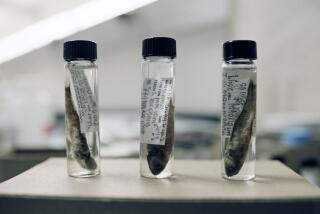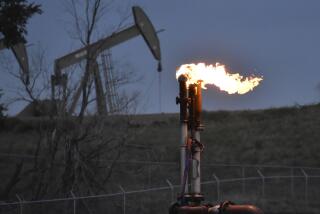Bacteria devoured methane from gulf oil spill, study shows
Scientists investigating the fate of the oil and natural gas that spewed into the Gulf of Mexico during last year’s BP spill established quickly that bacteria had consumed much of the propane and ethane that leaked from the well.
Now they have found that bacteria also made short order of the most abundant hydrocarbon released during the spill — methane — probably consuming most of the 200,000 tons the well ejected within 120 days of the onset of the leak from the ruptured well, according to research published Thursday in the journal Science.
The discovery was a surprise, said David Valentine, a professor of microbial geochemistry at UC Santa Barbara and a member of the research team.
“We expected it to stick around a year or more,” he said. “But by September, the methane had been reduced to background levels.”
In its place, Valentine said, the researchers found reduced oxygen levels — suggesting an uptick in bacterial respiration in the area — as well as a “residual community” of bacteria known to consume methane.
“They are like the cat that ate the canary, sitting there with feathers on the face,” he said.
Like ethane and propane, methane is a component of natural gas. It occurs naturally in oceans, sometimes seeping from vents on the ocean floor. Generally, bacteria in the ocean consume methane very slowly. This case may have been different, Valentine said, “because there was so much of it. The right bacteria got a foothold.”
The discovery could affect scientists’ understanding of how methane from the ocean cycles into the atmosphere, according to the study.
Vast reserves of natural gas lie beneath the ocean floor, said Richard Camilli, an associate scientist at the Woods Hole Oceanographic Institute in Massachusetts who wasn’t involved in the study. Some have speculated that if large amounts of methane from those stores were to escape, it could significantly raise levels of greenhouse gases in the atmosphere.
But the rapid consumption of this methane suggests the ocean’s bacteria could offer protection during such an event, Valentine said.
“For methane to get into the atmosphere, it has to get past this biofilter,” he said. “The magnitude of emissions would have to be significant to overcome these hurdles.”
Camilli praised the study for presenting a persuasive story of what happened after the spill.
But Samantha Joye, a University of Georgia marine scientist who also studies the gulf spill, said she thought the team’s data failed to back up the claim that the methane was gone.
“An equally plausible explanation is that we haven’t found it yet,” she said, adding that currents in the gulf aren’t well understood and the team may have sampled water in the wrong location. “I feel there’s still a lot of gas out there somewhere.”
Valentine said the team took its measurements in areas where many scientists expected to find residual oil and gas and that he was “confident in our data.” He is now researching the fate of dispersants and the remaining oil in the gulf.







